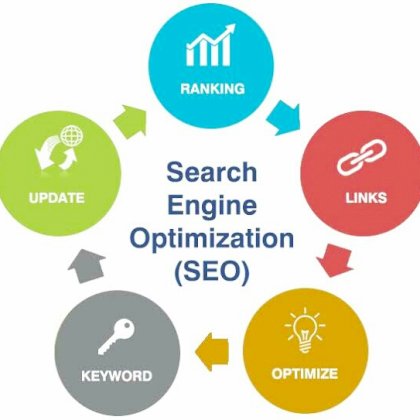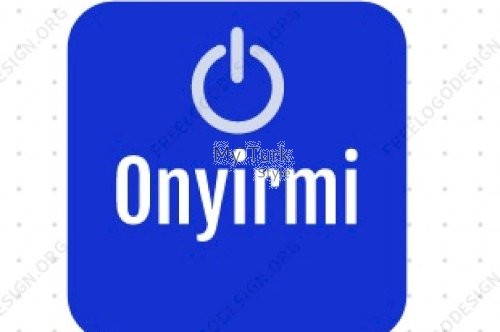How to Advertise on Google: A Step-by-Step Guide

advertise on google Advertising on Google is a powerful and effective way for businesses to reach their target audience and increase their online visibility. Google, being the most popular search engine globally, attracts billions of users daily, making it an ideal platform for advertising. With Google's advertising tools like Google Ads, businesses can create and manage their online campaigns, targeting specific keywords, locations, and demographics. The unique targeting options provided by Google Ads allow businesses to tailor their advertisements to reach the right audience at the right time, maximizing their chances of converting viewers into customers. Investing in advertising on Google can significantly boost a business's online presence and drive valuable traffic to their website.
Welcome to this comprehensive guide on how to effectively advertise on Google. In today's digital age, advertising online has become an integral part of any business strategy. And when it comes to online advertising, Google is the undisputed leader. In this article, we'll walk you through the step-by-step process of creating successful Google ads that drive targeted traffic to your website.
Before we dive into the details, let's talk about why advertising on Google is so crucial for your business. With over 5.6 billion searches per day, Google is the go-to search engine for people worldwide. By advertising on Google, you can reach potential customers at the exact moment they are searching for products or services related to your business. That's powerful!
The first step in advertising on Google is to set up your Google Ads account. Go to the Google Ads website and follow the prompts to create your account. Once you have your account set up, you can start creating your first ad campaign.
Keyword research is the foundation of any successful Google ad campaign. Start by brainstorming a list of relevant keywords that your potential customers might use when searching for your products or services. Then, use the Google Ads Keyword Planner tool to expand your list and discover new keywords with high search volumes and low competition.
Once you have your list of keywords, it's time to create compelling ad copy. Your ad should grab the attention of your target audience and entice them to click. Use your keywords strategically in the headline and description to make your ad highly relevant to the user's search query. Remember, you only have a few seconds to make a lasting impression!
Besides catchy ad copy, another crucial element of a successful Google ad campaign is landing page optimization. Your landing page should provide a seamless user experience and deliver on the promise made in the ad. Make sure your landing page is mobile-friendly, loads quickly, and includes relevant and valuable content. A well-optimized landing page will not only improve your ad's quality score but also increase your chances of converting website visitors into customers.
As your ad campaign runs, it's important to monitor its performance and make necessary adjustments. Google Ads provides comprehensive reporting tools that allow you to track key metrics such as click-through rate (CTR), conversion rate, and return on ad spend (ROAS). Analyze this data regularly and tweak your ads and targeting settings to optimize your campaign's performance.
In conclusion, advertising on Google offers immense opportunities to reach your target audience and grow your business. By following the step-by-step guide outlined in this article, you can create effective Google ad campaigns that drive results. Remember to prioritize keyword research, create compelling ad copy, optimize your landing pages, and continuously monitor and adjust your campaigns for optimal performance. Start advertising on Google today and reap the rewards of targeted online advertising!
Benefits of Advertising on Google: Why You Should Consider It
In today's digital age, businesses are constantly looking for effective ways to promote their products and services. One avenue that has proven to be highly successful is advertising on Google. This article will explore the numerous benefits of advertising on Google and why you should seriously consider incorporating it into your marketing strategy.
Increased Online Visibility
Perhaps the most compelling reason to advertise on Google is the increased online visibility it provides. With billions of people using Google every day, your business has the potential to reach a vast audience. By implementing targeted keywords in your ads, you can ensure that your business appears prominently in relevant search results.
Highly Targeted Advertising
Unlike traditional forms of advertising, Google Ads allows you to specifically target your ideal audience. This means that you can tailor your ads to appear to users who are more likely to be interested in your products or services. By selecting demographics, locations, and interests, you can maximize the effectiveness of your campaign and increase the chances of conversion.
Cost-Effective Advertising
One of the major advantages of advertising on Google is that it is cost-effective. Unlike other advertising methods, it allows you to set a budget that suits your business needs. Additionally, you only pay when someone clicks on your ad, ensuring that your advertising budget is being utilized efficiently.
Measurable Results
With Google Ads, you can easily measure the success of your advertising campaign. Through the use of analytical tools, you can track metrics such as impressions, clicks, and conversions. This enables you to make data-driven decisions and optimize your ads for optimal performance.
Quick and Flexible Campaigns
Another benefit of advertising on Google is the ability to launch campaigns quickly and easily. Unlike other forms of advertising that require extensive planning and production, Google Ads can be up and running in a matter of hours. This flexibility allows you to respond swiftly to market trends and adjust your campaign accordingly.
- Increased online visibility
- Highly targeted advertising
- Cost-effective advertising
- Measurable results
- Quick and flexible campaigns
In conclusion, advertising on Google offers numerous benefits that can significantly enhance your marketing efforts. With increased online visibility, highly targeted advertising, cost-effectiveness, measurable results, and quick campaign launches, it is clear why you should consider incorporating Google Ads into your marketing strategy. By implementing these strategies, you can effectively reach your target audience, drive traffic to your website, and ultimately boost your business's success.
Google Ads vs. Organic Search: Which is Better for Your Business?
When it comes to promoting your business online, there are two main options that you need to consider: Google Ads and organic search. Both methods have their own advantages and disadvantages, but which one is better for your business? In this article, we will explore the differences between Google Ads and organic search, and help you determine which strategy is the right fit for your business goals.
What are Google Ads?
Google Ads, formerly known as Google AdWords, is an online advertising platform that allows businesses to create and display ads on Google's search engine results pages. With Google Ads, you can target specific keywords and demographics to reach your desired audience. The ads are displayed at the top or bottom of the search results, and you only pay when someone clicks on your ad.
One of the main advantages of Google Ads is that it allows you to reach a highly targeted audience. By selecting the right keywords and demographics, you can ensure that your ads are being shown to people who are actively searching for products or services similar to yours. This can lead to higher conversion rates and a better return on investment.
What is Organic Search?
On the other hand, organic search refers to the natural listings on Google's search engine results pages. These listings are determined by Google's algorithm, which takes into account various factors such as relevance, authority, and user experience. Unlike Google Ads, you don't pay for these organic listings. Instead, they are earned through the quality and relevance of your website's content.
Organic search can be a powerful strategy for long-term success. By optimizing your website for relevant keywords and providing valuable content, you can improve your website's visibility in the organic search results. This can lead to increased organic traffic, brand credibility, and higher conversion rates.
Which is Better for Your Business?
Now that we have explored the differences between Google Ads and organic search, let's discuss which strategy is better for your business. The answer depends on various factors such as your budget, timeline, and business goals.
If you have a limited budget and want to see immediate results, Google Ads can be a great option. With Google Ads, you can start driving traffic to your website right away and generate leads or sales. However, keep in mind that you will need to continuously invest in advertising to maintain your visibility.
On the other hand, if you have a long-term mindset and want to build a strong online presence, organic search should be your focus. By consistently publishing high-quality content and optimizing your website for search engines, you can improve your organic rankings over time. This can result in sustainable, long-term traffic and credibility for your business.
In Conclusion
In conclusion, both Google Ads and organic search have their own benefits and drawbacks. The right strategy for your business depends on your specific needs and goals. If you have the budget and require immediate results, Google Ads can be a valuable tool. However, if you are looking for long-term success and credibility, investing in organic search is crucial. By understanding the differences between the two strategies and aligning them with your business goals, you can make an informed decision and effectively promote your business online.
| Advantages of Google Ads | Advantages of Organic Search |
|---|---|
| Instant visibility: With Google Ads, you can appear at the top of search results immediately. | Long-term visibility: By consistently optimizing your website, you can improve your organic rankings over time. |
| Targeted audience: Google Ads allows you to reach a highly targeted audience based on keywords and demographics. | Quality traffic: Organic search drives high-quality traffic from users who are actively searching for your products or services. |
| Cost control: With Google Ads, you have full control over your budget and can set daily limits. | Cost-effective: Organic search does not require direct payment, providing long-term cost savings. |
Tips for a Successful Google Advertising Campaign
Google Advertising has become an essential aspect of modern-day marketing strategies. With its vast reach and targeting capabilities, it offers businesses an effective way to promote their products or services to a global audience. However, running a successful Google Advertising campaign requires careful planning, execution, and optimization. In this article, we will discuss some valuable tips to help you achieve success in your Google Advertising efforts.
- Set Clear Goals: Before diving into any Google Advertising campaign, it's crucial to define your objectives. Whether you aim to generate leads, increase website traffic, or boost brand awareness, having clear goals will guide your strategy and measure your campaign's success.
- Conduct Thorough Keyword Research: Keywords play a vital role in Google Advertising as they determine when and where your ads will appear. Extensive keyword research will help you identify relevant terms and phrases that users are actively searching for. Incorporate these keywords organically into your ad copy to improve your visibility and attract the right audience.
- Create Compelling Ad Copy: Crafting persuasive and engaging ad copy is crucial for capturing users' attention and enticing them to click on your ads. Make your copy concise, informative, and highlight the unique selling points of your products or services. Remember, you have limited characters to make an impact, so make every word count.
- Optimize Landing Pages: Driving users to a well-designed and optimized landing page can significantly impact your conversion rates. Ensure that your landing page aligns with your ad's messaging and provides a seamless user experience. Optimize it for fast loading times and make it easy for users to navigate and take the desired action.
- Monitor and Analyze Performance: Regularly monitor your Google Advertising campaign's performance to identify areas for improvement. Use tools like Google Analytics to track key metrics such as click-through rates, conversion rates, and return on ad spend. Analyze this data to make informed decisions and optimize your campaign accordingly.
Implementing these tips will help you maximize the effectiveness of your Google Advertising campaign. Remember, success in Google Advertising requires constant adaptation and optimization. Stay up to date with industry trends, explore new targeting options, and refine your strategy to stay ahead of the competition.
Common Mistakes to Avoid When Advertising on Google
When it comes to advertising on Google, there are common mistakes that many businesses make. These mistakes can negatively impact your ad campaign and prevent you from reaching your target audience effectively. In order to ensure the success of your Google ads, it's important to avoid these common pitfalls.
First and foremost, one of the biggest mistakes is not doing enough research on keywords. Keywords are the foundation of any successful ad campaign on Google. It's crucial to conduct thorough keyword research to identify the most relevant and high-performing keywords for your ads. By targeting the right keywords, you can increase the visibility of your ads and attract quality traffic to your website.
Another common mistake to avoid is not utilizing ad extensions. Ad extensions are additional pieces of information that can be added to your ads, such as phone numbers, location information, or links to specific pages on your website. By utilizing ad extensions, you can provide more information to potential customers and make your ads more engaging and impactful.
Furthermore, many businesses make the mistake of not optimizing their landing pages. Your landing page is where potential customers will be directed to when they click on your ads. It's important to ensure that your landing page is well-designed, user-friendly, and relevant to the ad copy. A poorly optimized landing page can lead to a high bounce rate and low conversion rates.
In addition, not monitoring and analyzing your ad campaign is a common mistake that can hinder your success on Google. It's essential to regularly monitor the performance of your ads, track key metrics such as click-through rates and conversion rates, and make necessary adjustments to optimize your campaign. By constantly analyzing your data, you can identify areas for improvement and make data-driven decisions for better results.
Lastly, a common mistake is not setting a realistic budget for your Google ads. It's important to have a clear understanding of your advertising goals and allocate a suitable budget accordingly. Setting an unrealistic or insufficient budget can prevent your ads from reaching their full potential and limit your success on Google.
| Common Mistakes | Impact | Solution |
|---|---|---|
| Insufficient keyword research | Reduced visibility and low-quality traffic | Conduct thorough keyword research and target relevant, high-performing keywords |
| Not utilizing ad extensions | Limited engagement and information provided | Add ad extensions to provide additional information and make ads more engaging |
| Poorly optimized landing pages | High bounce rate and low conversion rates | Optimize landing pages to be user-friendly, well-designed, and relevant to the ad copy |
| Failure to monitor and analyze ad campaign | Missed opportunities for optimization and improvement | Regularly monitor key metrics, analyze data, and make necessary adjustments |
| Unrealistic or insufficient budget | Limitations on ad reach and success | Set a realistic budget that aligns with your advertising goals |
In conclusion, when advertising on Google, it's crucial to avoid common mistakes that can hinder your success. Conduct thorough keyword research, utilize ad extensions, optimize your landing pages, monitor and analyze your ad campaign, and set a realistic budget. By avoiding these mistakes and implementing effective strategies, you can maximize the impact of your Google ads and achieve your advertising goals.
For more information about Google advertising, you can visit (Common Mistakes to Avoid When Advertising on Google).
Frequently Asked Questions
To advertise on Google, you can use Google Ads. Google Ads allows you to create and manage online advertising campaigns. You can set your budget, select your target audience, and choose where and when your ads will appear on Google's advertising network.
Advertising on Google offers several benefits. It allows you to reach a large audience, as Google is one of the most popular search engines worldwide. It also provides targeted advertising, meaning your ads are shown to people who are searching for keywords related to your business. Additionally, Google Ads provides detailed performance data and analytics to help you optimize your campaigns and measure the success of your advertising efforts.
The cost of advertising on Google varies depending on several factors, including your advertising goals, competition for keywords, and the quality and relevance of your ads. Google Ads operates on a pay-per-click (PPC) model, where you only pay when someone clicks on your ad. You can set a budget for your campaigns and adjust your bids to control your costs.
Yes, you can target your ads to specific locations using Google Ads. You can choose to show your ads to people in specific countries, regions, cities, or even within a certain radius of your business location. This allows you to reach your target audience and tailor your advertising efforts to specific geographic areas.
Google Ads provides detailed performance data and analytics to help you measure the success of your advertising campaigns. You can track metrics such as impressions, clicks, click-through rates, conversion rates, and return on investment (ROI). This information can help you optimize your campaigns, make data-driven decisions, and achieve your advertising goals.
Yes, Google has guidelines and policies for advertising on its platform. These guidelines cover various aspects such as ad content, landing page quality, prohibited content, and advertising practices. It's important to familiarize yourself with these guidelines to ensure compliance and avoid any potential issues with your ads.
Yes, you can advertise on Google even with a small budget. Google Ads allows you to set your own budget for your campaigns. You can start with a small budget and gradually increase it as you see positive results and revenue from your advertising efforts.
Google Ads offers various ad formats to suit different advertising goals and preferences. These include text ads, display ads, video ads, shopping ads, and app promotion ads. Each ad format has its own specifications and requirements, allowing you to choose the most suitable format for your business and target audience.
To improve the performance of your Google advertising campaigns, you can consider various strategies. These include optimizing your keywords and ad copy, testing different ad variations, targeting specific audience segments, improving your website landing pages, and leveraging audience insights and analytics data to make data-driven decisions.
No, currently the primary way to advertise on Google is through Google Ads. Google Ads provides a comprehensive set of tools and features to create, manage, and optimize your online advertising campaigns on Google's advertising network. However, there may be other advertising options available on specific Google platforms or products.
 English
English
 Turkish
Turkish 























